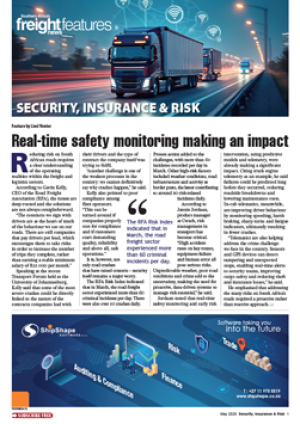... but lines are
conservative in rates hike expectations
QUITE A considerable amount of competitive strain has been taken off the Far East - South America sea trade where rate levels have been described as abysmally low for some years.
Recent events indicate that about 15 vessels could be pulled off all or part of this trade route, with rationalistaion having become the answer to serious overtonnage, and economic woes at either extremity of the run.
Maersk has just announced that it has joined Safari (the SA - Far East consortium) and pulled its own vessels off the Asia - SA route. However, FTW is led to understand these are mostly involved in carrying boxes in the line's international network between the Far East and the North West Continent of Europe via SA.
Nantai has temporarily taken two vessels out of its Far East - South America service.
The latest and biggest rationalisation is a proposed tie-up of Taiwanese major Evergreen with the country's other big line, Yang Ming, and the Mainland Chinese national line Cosco.
This, at the moment, would seem to indicate that about 10/11 ships will be pulled off the route, although one or two could yet be reintroduced into the new service, which is still in the process of finalisation.
The first question that springs to mind is: Is this enough relief of the oversupply of space to allow for an increase in the rates on the Far East - SA trade? - something the lines would be delighted to see.
A main factor in this decision is the distinct difference between the likes of Safari - with a dedication to that one leg of the trade - and the others, who generate most of their tonnage on the Asia - South America leg, with possibly only sporadic calls in SA.
For the Coscos of this world, I imagine, only about 10% is SA cargo, said Brett Gray, liner director of Safmarine, a main player in the Safari group. It will not have a material effect on the SA market. But even a little is a help in a seriously overcrowded marketplace.
Gray, therefore, does not see it as an automatic indicator that rates can rise.
If the SA and eastern economies bounce back, and some tonnage has been pulled off, it might be better for the future. However, I'd like to see stability of rates first, before I count my chickens.
But John Turner, m.d. of P&O Nedlloyd, takes a slightly different stance.
Some rates restitution is necessary sooner rather than later, he told FTW.
I'd have thought it has been perfectly clear that SA - Far East rates are desperately depressed.
What's just been happening is part of that.
However, just when this sooner will be is a bit difficult to say, according to Turner.
But my view is if rates are not brought up from some of the levels at which people have been carrying boxes to the Far East, they'll go out of business.
Murray Paul Grindrod, m.d. of Quadrant Container Line, probably the most direct SA beneficiary of the pull-out with its GEX service serving all three areas of this trade, is, like Gray, somewhat conservative in his aspirations.
The withdrawal of tonnage is really only matching supply against demand, he told FTW. It will somewhat reduce the overtonnage on the trade, but the competition will remain as strong.
Grindrod is another who expects to see stabilisation of rates rather than any upward jump.
My hope is that the others - who have pulled space off the trade - will remain as names, even with this reduced tonnage, he said. It will allow everybody in the trade a better share of the pie.
By Alan Peat
